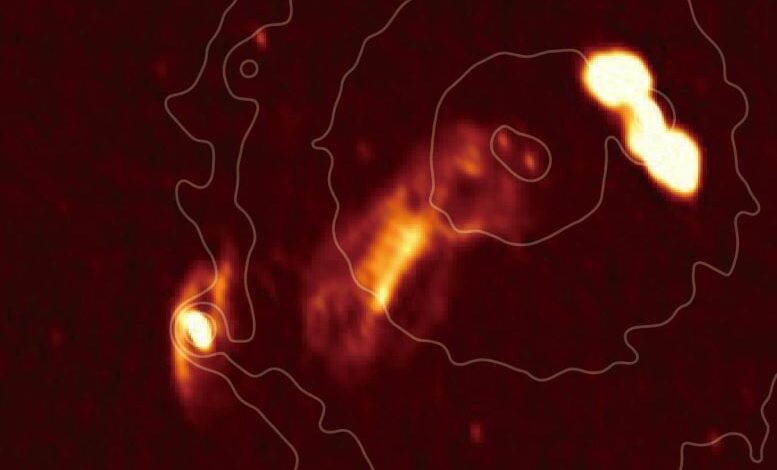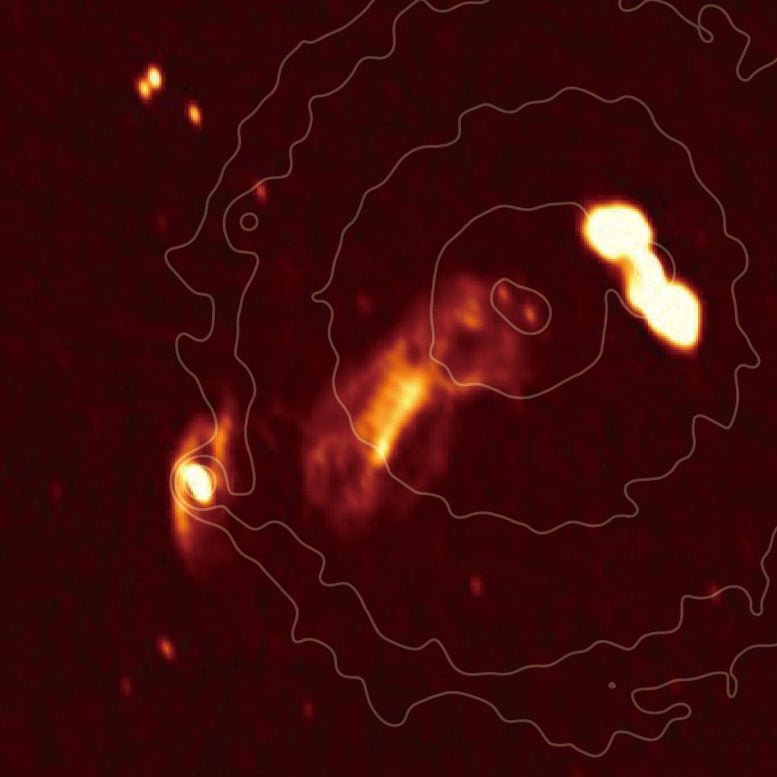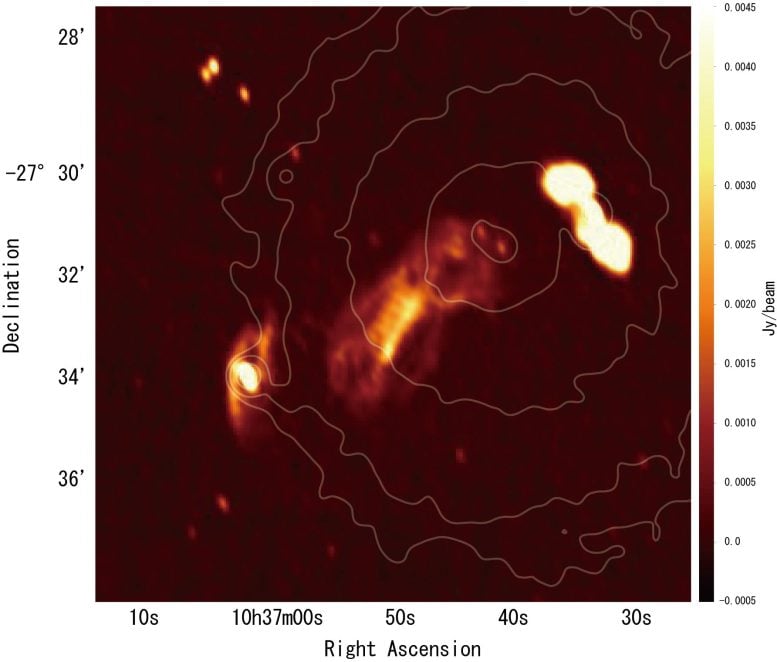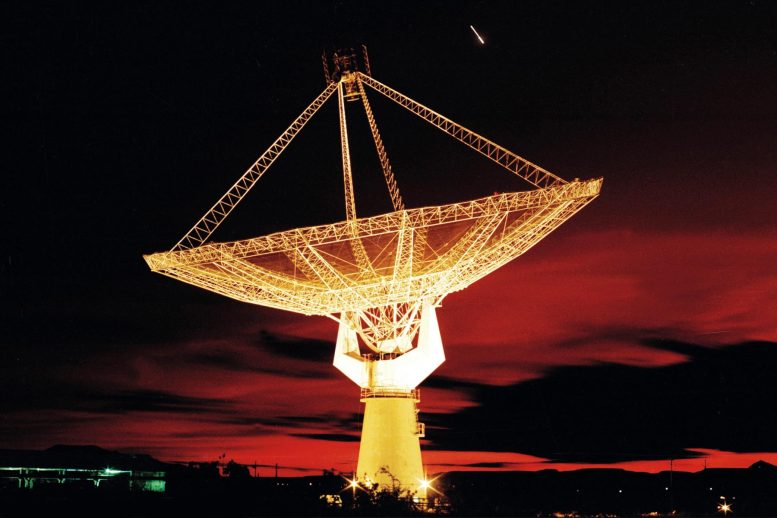Astronomers Discover Inexplicable Flying Fox in Hydra Galaxy Cluster


The Flying Fox, a mysterious plasma cloud in the Hydra galaxy cluster, defies conventional astronomical categories with its unique structure and undetectable host galaxy. Discovered via the GMRT, this phenomenon is the focus of ongoing research aiming to uncover more about its origins and nature. Credit: Kohei Kurahara
A newly discovered cloud of magnetized plasma, called the Flying Fox, located in the Hydra galaxy cluster, challenges existing astronomical classifications due to its unique shape and lack of a central host galaxy.
High sensitivity radio observations have discovered a cloud of magnetized plasma in the Hydra galaxy cluster. The odd location and shape of this plasma defy all conventional explanations. Dubbed the Flying Fox based on its silhouette, this plasma will remain a mystery until additional observations can provide more insight.
A team led by Kohei Kurahara at the National Astronomical Observatory of Japan (NAOJ) analyzed observations from the Giant Metrewave Radio Telescope (GMRT) targeting the Hydra galaxy cluster, located over 100 million light-years away in the direction of the constellation Hyrda. By applying recent analysis techniques to the GMRT (Giant Metrewave Radio Telescope) data archive, the team was able to discover a cloud of magnetized plasma shaped like a flying fox which has never been reported before.

The “head” of the Flying Fox discovered this time points to the southwest (lower right). The Flying Fox has a “wingspan” of 220,000 light years. The white contours in the background show the X-ray surface brightness as observed by ESA’s XMM-Newton satellite. Credit: Kohei Kurahara
Radio/optical/IR/X-ray images failed to find a host galaxy at the center of the Flying Fox. This combined with its elongated shape, has left astronomers scratching their heads; the Flying Fox does not fit the model for any known class of objects. New observing facilities, like the Square Kilometre Array currently under construction, are expected to study the Flying Fox and provide new insights into the nature and history of this unusual object.

One of the dishes of the Giant Metrewave Radio Telescope (GMRT) near Pune, Maharashtra, India. Credit: National Centre for Radio Astrophysics
The Giant Metrewave Radio Telescope (GMRT) is an array of thirty fully steerable parabolic radio telescopes located near Pune, India. It is operated by the National Centre for Radio Astrophysics. Designed to operate at low radio frequencies ranging from about 50 MHz to 1500 MHz, GMRT is one of the largest and most sensitive radio observatories in the world. This telescope allows scientists to investigate a variety of astronomical phenomena, including pulsars, galaxies, quasars, and cosmic microwave background radiation.
Reference: “Discovery of diffuse radio source in Abell 1060” by Kohei Kurahara, Takuya Akahori, Aika Oki, Yuki Omiya and Kazuhiro Nakazawa, 24 February 2024, Publications of the Astronomical Society of Japan.
DOI: 10.1093/pasj/psae011

